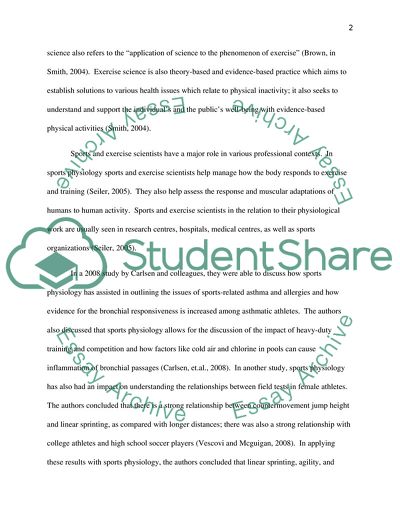Cite this document
(The Role of Sport & Exercise Scientists in Different Professional Assignment, n.d.)
The Role of Sport & Exercise Scientists in Different Professional Assignment. Retrieved from https://studentshare.org/health-sciences-medicine/1771686-essay-critically-discussing-the-role-of-sport-exercise-scientists-in-different-professional-contexts-with-a-critical-evaluation-of-a-particular-study
The Role of Sport & Exercise Scientists in Different Professional Assignment. Retrieved from https://studentshare.org/health-sciences-medicine/1771686-essay-critically-discussing-the-role-of-sport-exercise-scientists-in-different-professional-contexts-with-a-critical-evaluation-of-a-particular-study
(The Role of Sport & Exercise Scientists in Different Professional Assignment)
The Role of Sport & Exercise Scientists in Different Professional Assignment. https://studentshare.org/health-sciences-medicine/1771686-essay-critically-discussing-the-role-of-sport-exercise-scientists-in-different-professional-contexts-with-a-critical-evaluation-of-a-particular-study.
The Role of Sport & Exercise Scientists in Different Professional Assignment. https://studentshare.org/health-sciences-medicine/1771686-essay-critically-discussing-the-role-of-sport-exercise-scientists-in-different-professional-contexts-with-a-critical-evaluation-of-a-particular-study.
“The Role of Sport & Exercise Scientists in Different Professional Assignment”, n.d. https://studentshare.org/health-sciences-medicine/1771686-essay-critically-discussing-the-role-of-sport-exercise-scientists-in-different-professional-contexts-with-a-critical-evaluation-of-a-particular-study.


